|












|
Archaeology
The grounds of the
actual Chair of Archaeology were established for about 30 years ago. At
that time there was founded the Laboratory of Archaeology Researches
under the leadership of h. s. c. A. I. Martynov in the Kemerovo
Pedagogical Institute. Many students worked there, including V. Bobrov,
A. Kulemzin, Yu. Borodkin, V. Bobkov, N. Pokrovskaya, Ye. Popov, A.
Vasyutin, S. Markin.
Archaeological
materials were accumulating in the Institute. An archaeology
lecture-room was created on the fourth floor of the building № 2, and
anthropological collection was placed in a small wooden house in the
yard.
The formation of a
scientific archaeological school starts since the beginning of 60-s of
the last century: field researches results and publications started to
appear. In 1959-60, 1968 archaeologists excavated a Tagar burial ground
on the Yagunya River, and in 1964-66 the Tissul burial ground was
discovered. In 1970 the excavations of the Mikhaylovo kurgan burial
ground were finished and the excavations of a settlement on the river
Kiya in Chebula district started; in 1969 the Serebryakovo burial ground
was excavated, in 1968 – the Shestakovo kurgans, in 1970 –the Nekrasovo
kurgans. All this created excellent archaeological materials
repositories by the moment of the opening of the University and
predetermined the foundation of the Chair of Archaeology in a new
University.
The first exposition
of the Museum of Archaeology and Ethnography of South Siberia was opened
in 1980, on the first floor of the building № 2 of the Kemerovo State
University (KemSU). The museum was included into the structure of the
Chair of Archaeology. A young worker of the Chair of Archaeology N. A.
Mavrina (Belousova) became the first head of the museum. The basic
aspects of the museum work were educative and scientific activity.
In 1983 All-Union
seminar of restoration and conservation of archaeological ceramic was
organized on the materials of the Museum.
At the end of 1984 the Museum moves to a new building on 77 Sovietsky
avenue, and the second exposition is established in an academic variant.
Since 1994 visitors
can see the third exposition of the museum which represents five
departments: Stone Age, Bronze Age, Scythian Age, Huns Age and Middle
Age. The base of the scientific and artistic conception of the
exposition was the idea of figurative perception of history from ancient
time till the Middle Age. The artistic organization of the expositions
was intended and made by the workers of the museum E. A. Mikloshevich,
E. M. Sosipatrov, N. A. Belousova. The exposition of the Archaeology
department consists of 1856 authentic exhibits from excavations of
Archaeology department scientists: professors A. Martynov, V. V. Bobrov,
Ya. A. Sher, A. M. Kulemzin, historic sciences candidates A. S. Vasyutin,
B. N. Pyatkin, G. S. Martynova, I. O. Okuneva, A. M. Ilyushin,
scientific workers V. V. Ivanchuk, E. M. Rabinovich, a teacher of local
lore M. G. Elkin.
The forming of the
petroglyph collections began in 1970-s, with the organization of a
special group of petroglyphists under the supervision of B. N. Pyatkin
as a part of the South Siberian Archaeological expedition, which started
to explore the rock art complexes of the middle Enissey. The research
workers of the archaeology department of KemSU Ya. A. Sher, A. I.
Martynov, O. S. Sovetova, E. A. Mikloshevich explored many rock art
sites of Tuva, Altay, Kyrgyzstan. The unique copies of rock art
representations in the museum are the results of their work. The largest
collection among them is the collection of middle Enissey petroglyphs.
The illustrations on the copies are varied and represent different ages.
The chronological range extends from the Neolithic to the present. The
museum also possesses a collection of mycalent copies of representations
from Tagar burial mounds gravestones in Khakassia. Petroglyphes are
included in the museum exposition. The copies by E. A. Miklashevich are
made as close as possible to the natural color.
Scientific archive
contains field drawings, pictures, field researches reports, negatives,
historical faculty students’ researches, and microfilms of archaeology
and ethnography scientific works. |
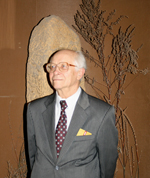
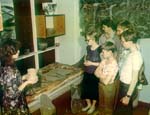
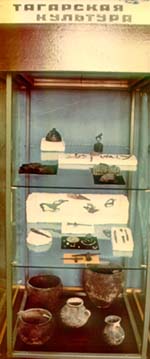


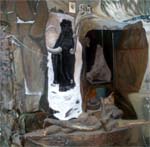

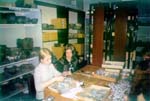 |

